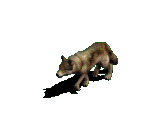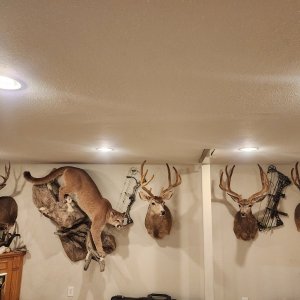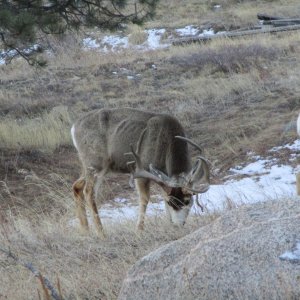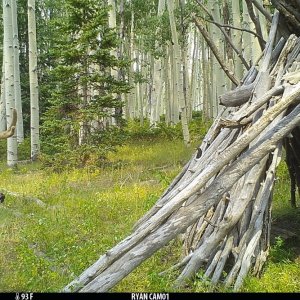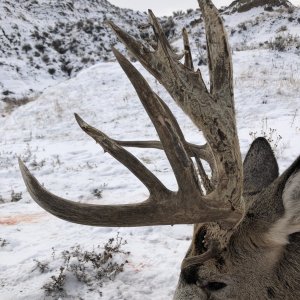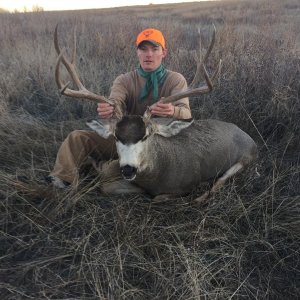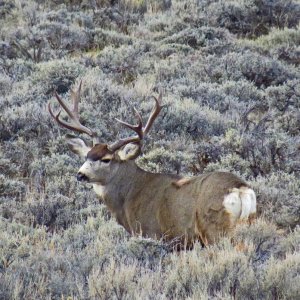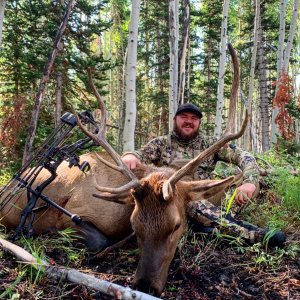The training of an antler dog is a subject that easily could fill a book. For our purposes here, one of the most important considerations for achieving success is the dog itself. All the training and association in the world cannot substitute for a dog?s natural tendencies and instincts. Those hardwired abilities are the foundation for honing the skills needed to be a good antler dog.
When choosing an animal, it is critical to evaluate the dog as an individual. When a handler discovers what motivates the dog, he or she can then rely on the animal?s personality and drive to assist in the training process. This evaluation is simpler and more accurate when dealing with a young adult animal than it is when working with a puppy.
Some trainers like to get their hands on a dog at just a few weeks of age, claiming that they can create the necessaly drives and enthusiasm in the animal and shape the dog to whatever configuration is needed. Perhaps. But if the trainer can determine the dog?s levels of natural tendencies and then capitalize on those behaviors to enhance what the dog is already prepared to do without trainng, the entire process is more productive for both the dog and the handler. Wit), that said, there are five skills the dog must have that are all-important in order to achieve success in your training progmm.
NECESSARY SKILLS
I) The hunt drive: In other words, how long will the dog search for an object that has caught his attention? How much time and effort will he expend looking for that toy or ball or antler ?r that he likes? Of course, the age of the dog enters into this aspect. The attention span of a puppy is much shorter that that of an older dog, but the animal must have a committed mind-set in this area.
2) The prey drive: Will he chase a moving object? Dogs are, in many ways, wolves that never quite grew up. As a pack-driven hunting predator, the need to chase and drag down prey is cellular in nature. What serves our purpose here is the dog that is almost possessed by the need to pursue. Even though shed antlers rarely get up and try to run away, the chase imperative is vital.
3) The play drive: Put simply, which one of you gives out first during playtime? If the dog will not quit when the two of you are playing fetch or chase, if he consistently outlasts your best efforts, and if he is always ready for the play/game interaction, then this is a dog that may well have adequate play drive.
4) Retrieve drive: Will he continue to bring it back to you long after you're tired of throwing it? If the sight of that ball or dummy gets him so excited and motivated that he will retrieve it again and again for as long as you ask him to and not want to quit when the session is done, then the dog is well-suited in this skill area.
5) Leadership drive: Because dogs are pack animals, they have an inborn respect and desire for leadership. One of the reasons that dogs are, as a rule, more easily trained than cats is that they like to be told what to do. Will the dog submit to you? Will he look to you for instruction? Does he have a need to please you and earn your praise?
These five areas are critical in choosing an animal to train as an antler dog. It's true that a small percentage of dogs may fall naturally into this skill, but those dogs are rare. For the most part, the old saying practice makes perfect? applies. When you have a motivated animal, practice is fun, When practice is fun, training is ajoyous exercise for both the dog and his handler. Look for a dog that gets 80 percent or higher marks in all five of these drive areas.
ACTUAL TRAINING
Once the evaluation process is completed, the actual training begins. The dog needs to be ?nosey? without a doubt, but a wide range of breeds may be suitable to the task if they fill the requirements listed above. At the time ofthis writing, master dog trainer Roger Sigler, the dog trainer responsible for the infonnation contained in this article, has a Labrador retriever, a German shepherd and a pit bull in his stable of trainees.
Currently, the pit bull is at the top of the class.
In the early stages of training, the antler dog is worked much as if he were a bird dog. Roger uses a method that involves retrieving a ball that has been skewered with the tine of a deer antler. As training progresses, the ball is gradually reduced in size until only the antler is left. The dog?s play drive is then directed toward antlers.
In the beginning, the dog can be worked inside on a lead. As his ability and desire grow, the training sessions can be moved to the yard, a field, unfamiliar terrain, or even old outbuildings or barns: The change of location brings variety to the training experience and helps the dogs ability to concentrate and focus on the task at hand.
If the dog loves to tug, tie the antler to a rope. This way, the antler can be swung overhead as a tease before being thrown. The play drive of the dog is rewarded, and the handler?s fingers are safely unavailable to the overly excited student.
As the dog grows in ability and as his enthusiasm increases, with encouragement the animal will begin to hunt for antlers in a given area. It is vital early on that the dog be allowed to find antlers often and that he receive high praise for his efforts. As time goes by. and as the animal increasingly identifies with his job, the search areas should be expanded.
Now comes what Roger believes to be the biggest obstacle in training an antler dog, Antlers rarely attempt to run away or escape. For this reason, Roger has developed what he calls his ?antler trap.?
Radio-controlled and easily positioned in a search area prior to the dog?s arrival, the trap can remain passive, loaded with an antler, and ready to go. Just as a dog will pay more attention to a live bird than a dead one, an antler dog in training will be more excited about his job if he perceives that the antler might escape. As the dog nears the trap, hs handler can, using the remote radio control, cause the trap to catapult the antier into the air and away from the dog. The animal?s play response is then thrust into high gear. The dog, now with an element ofrisk that the antler might get away, and a chance to satisfy his need to pursue, becomes even more emotionally involved in the training.
From experience, Roger believes that patience, spaced repetition, rewards and praise can combine to the training of an antler dog. He also believes the addition of a few remote-controlled antler traps can shorten the training period significantly and create a more focused, more enthusiastic animal. Five or six of the traps in a field, with only three or four of them loaded to make sure the dog keys on the antlers and not just the traps, is ideal.
This situation can be improved even more if someone other than the handler loads the traps as much as a day before the dog enters the field,
and if the antlers are freshly washed to reduce the handler?s scent level.
Many other factors come into play in the training process. Finding the type of reward most important to the dog is very important. The time of year the training is being done is also very relevant. Thmperature, bumidit)? pollen or mold count, whether you are in fresh fescue or old wheat stubble, whether the dog is rested or fatigued, and the severity of the terrain are but a few of the factors that affect the training. The variabes are nearly endless and, to a large degree, are out of the handler? control. That is why consistency in those things that are in the handler?s control is so vital.
Above all, the dog should enjoy his job. Boredom must be avoided. If the training process is fun for the handler and fun for the dog, it creates a partnership that can accomplish almost anything. When that type of relationship happens, everybody wins and antler dog training becomes very rewarding for both man and beastt
(Editor?s Note: If you woud like mote information on training techniques, if you are considering the purchase of a trained dog, or if you would like information on obtaining radio-controlled antler traps, contact Master Trainer Roger Sigler at 816- 891-3421 or rsiglerkc.rr.com.) t?

